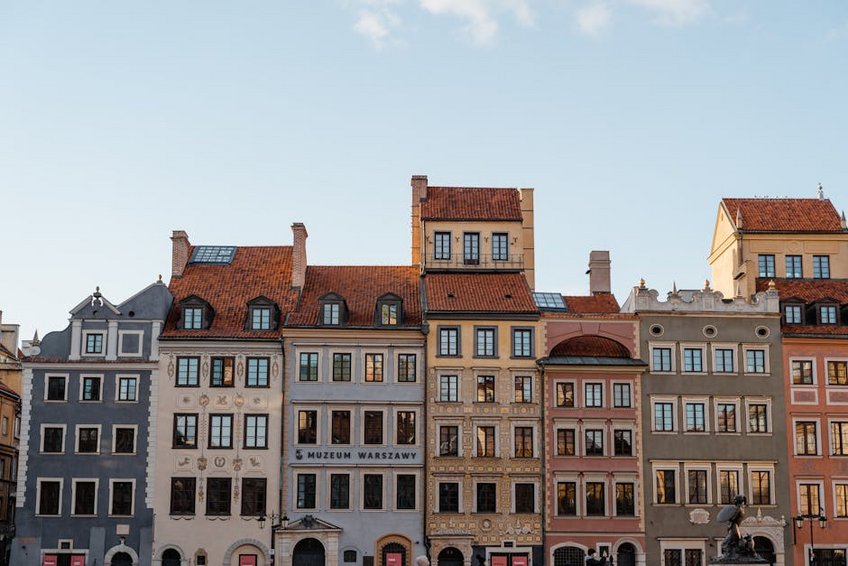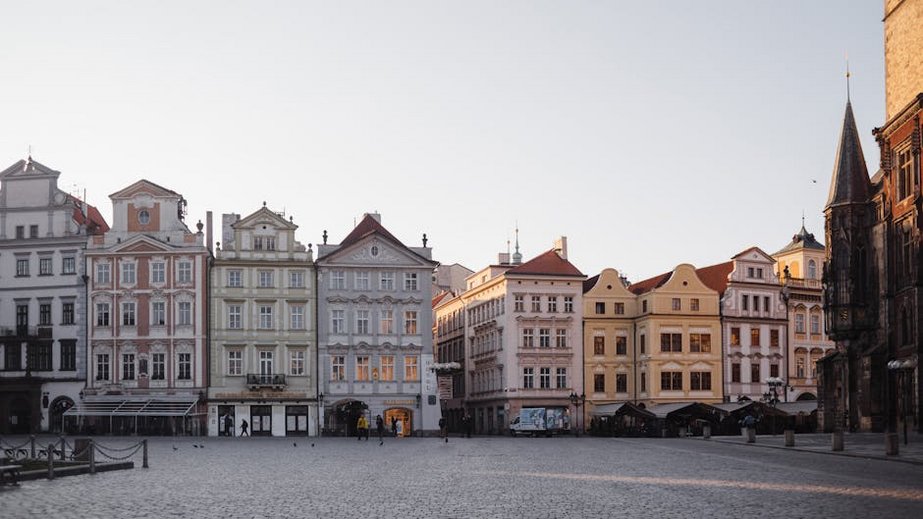Warsaw Old Town Square: A Phoenix Rising From The Ashes
Stepping into Warsaw Old Town Square feels like walking through a living history book where every cobblestone has a story to tell. This magnificent UNESCO World Heritage site stands as Europe’s most remarkable reconstruction project, meticulously rebuilt after near-total destruction in World War II. You’ll find yourself surrounded by pastel-colored merchant houses, charming cafes with outdoor seating, and the iconic Warsaw Mermaid statue watching over the bustling plaza. The square serves as the vibrant heart of Poland’s capital, where street performers entertain crowds, horse-drawn carriages offer romantic tours, and the scent of traditional Polish pierogi fills the air. Visiting Warsaw Old Town Square provides not just beautiful photo opportunities but a profound lesson in resilience and cultural preservation that will stay with you long after your visit ends.
Warsaw Old Town Square Historical Significance – More Than Meets The Eye
What makes Warsaw Old Town Square extraordinary isn’t just its picturesque appearance but the incredible story behind its existence. During the Warsaw Uprising of 1944, Nazi forces systematically destroyed over 85% of the Old Town, leaving almost nothing standing. What you see today is the result of a meticulous reconstruction project that used pre-war paintings, photographs, and architectural plans to recreate the square exactly as it appeared in the 18th century. This dedication to historical accuracy earned the square its UNESCO designation in 1980 as an outstanding example of near-total reconstruction. As you walk through the square, you’re actually experiencing a masterpiece of historical preservation that honors both the city’s tragic past and its triumphant rebirth.
The Reconstruction Miracle – How They Rebuilt Perfection
- Architects used 18th-century cityscape paintings by Bernardo Bellotto (nephew of Canaletto) as primary references for authentic recreation
- Original building foundations and cellars were incorporated into new structures where possible
- The project took over 30 years with reconstruction continuing into the 1980s for some buildings
- Budget travelers can enjoy the square itself for free, with museum entry fees ranging from $5-15 per person and affordable street food options like zapiekanka (Polish pizza bread) for $3-5
- Mid-range visitors might budget $50-75 daily for guided tours ($20-30), sit-down meals at traditional milk bars ($15-25), and entrance to multiple museums
- Luxury experiences include private guided tours ($100-150), fine dining at restaurants like Bazyliszek ($60-100 per person), and carriage rides ($40-60 for 30 minutes)
- Official Warsaw Tourist Office
- UNESCO World Heritage Centre – Historic Centre of Warsaw
Symbolic Monuments and Their Meanings
The centerpiece of Warsaw Old Town Square is the Syrenka (Mermaid) statue, the official symbol of Warsaw since the 14th century. According to legend, a mermaid emerged from the Vistula River and promised protection to local fishermen, leading to the city’s founding. The mermaid appears on the city’s coat of arms holding a sword and shield, representing Warsaw’s defensive spirit. Another significant monument is the Sigismund Column, erected in 1644 by King Władysław IV to honor his father Sigismund III Vasa, who moved Poland’s capital from Kraków to Warsaw. These monuments create layers of historical narrative that enrich your understanding of Polish culture and identity.
Warsaw Old Town Square Practical Planning – Making The Most Of Your Visit
Planning your visit to Warsaw Old Town Square requires considering seasonal variations, crowd patterns, and special events that might affect your experience. The square transforms throughout the year – from Christmas markets with handmade crafts and mulled wine in winter to open-air concerts and cultural festivals during summer months. Weekdays typically see fewer visitors than weekends, especially during midday when tour groups dominate the space. Early mornings (before 10 AM) offer the most peaceful experience for photography and contemplation, while evenings bring a magical atmosphere as the buildings illuminate against the night sky. I recommend allocating at least half a day to fully appreciate the square and its surrounding attractions without feeling rushed.
Best Time to Visit Warsaw Old Town Square
For ideal weather and fewer crowds, visit during shoulder seasons – late April to early June or September to early October. During these periods, temperatures range comfortably between 15-22°C (59-72°F) with longer daylight hours for exploration. Summer months (July-August) bring peak tourist season with larger crowds but also more events and longer opening hours for museums and attractions. Winter visits offer a magical experience with Christmas markets operating from late November through December, though be prepared for temperatures often dropping below freezing. Regardless of season, check the square’s event calendar as concerts, festivals, or official ceremonies might enhance or disrupt your visit.
Budget Planning and Costs
Essential Preparation Checklist
Before visiting Warsaw Old Town Square, ensure you have comfortable walking shoes as the cobblestone streets can be uneven and challenging in heels or stiff footwear. Download offline maps since the narrow streets can confuse navigation apps, and consider purchasing the Warsaw Pass if planning to visit multiple museums and attractions (approximately $35 for 24 hours). Currency exchange is best done before arrival as rates in the square tend to be less favorable, though ATMs are readily available. Learn a few basic Polish phrases like “dziękuję” (thank you) and “przepraszam” (excuse me) as locals appreciate the effort, though most vendors and restaurant staff speak English fluently.

Warsaw Old Town Square Top Attractions and Activities – Must-Experience Highlights
Beyond the obvious photographic opportunities, Warsaw Old Town Square offers numerous engaging activities that bring Polish history and culture to life. Start at the Warsaw Historical Museum located in the northern side of the square, which features excellent exhibits about the city’s destruction and reconstruction. Don’t miss climbing the steps of St. John’s Archcathedral, one of Poland’s oldest churches, where you can appreciate Gothic architecture and attend organ concerts frequently held in the evenings. The Royal Castle sits just a 3-minute walk from the square and deserves at least two hours to explore its opulent chambers and art collections. For a unique perspective, consider the underground tourist route that takes you beneath the square to see archaeological remains and learn about medieval Warsaw.
Must-See Architectural Highlights
The colorful townhouses surrounding Warsaw Old Town Square each have distinctive architectural features worth examining closely. Look for the Fukier House, one of the oldest preserved buildings with a beautiful Renaissance façade, and the Burbach House featuring elaborate stucco decorations. The Museum of Literature occupies the stunning Prządzyński House with its classical architecture, while the Wilczek House displays characteristic Polish attic style. Don’t overlook the square’s well, which dates back to the 18th century and served as the main water source for residents. These buildings create a harmonious architectural ensemble that represents different historical periods while maintaining visual coherence through coordinated color schemes and proportional design.
Hidden Gems and Local Favorites
Venture just beyond the main square to discover quieter spots that locals cherish. Ulica Piwna (Beer Street) features traditional Polish pubs where you can sample craft beers and regional snacks away from tourist crowds. The narrowest house in Warsaw at 7/9 Kanonia Street measures just 2 meters wide and makes for a fascinating photo opportunity. For panoramic views without the lines at the observation terrace, climb the bell tower of St. Anne’s Church which offers equally spectacular vistas of the square and Vistula River. Visit the small park behind the cathedral where you’ll find a bell that legend says brings good luck when walked around three times. These lesser-known spots provide intimate experiences that balance the square’s bustling energy.
Warsaw Old Town Square Practical Travel Information – Navigation Made Easy
Reaching Warsaw Old Town Square is straightforward thanks to Warsaw’s efficient public transportation system. The square sits approximately 2.5 kilometers from Warsaw Central Station, accessible by bus, tram, or metro with a single journey costing about $1.20. If arriving by air from Chopin Airport, the 175 bus takes you directly to the Old Town in approximately 40 minutes for $1.50. Once in the area, the entire Old Town is pedestrian-friendly with limited vehicle access, making walking the most practical way to explore. Taxis and ride-sharing services like Uber are readily available but cannot enter the square itself – designated pickup points exist at the perimeter. For those driving, parking facilities are available at Plac Zamkowy (Castle Square) with rates around $3-4 per hour.
| Accommodation Type | Recommended Areas | Price Range (USD per night) |
|---|---|---|
| Budget Hostels | Nowe Miasto (New Town), just north of Old Town | $25-45 |
| Mid-Range Hotels | Within walking distance of Old Town Square | $80-150 |
| Luxury Hotels | Historic buildings with square views | $200-400 |
| Apartment Rentals | Quiet streets surrounding main square | $70-120 |


